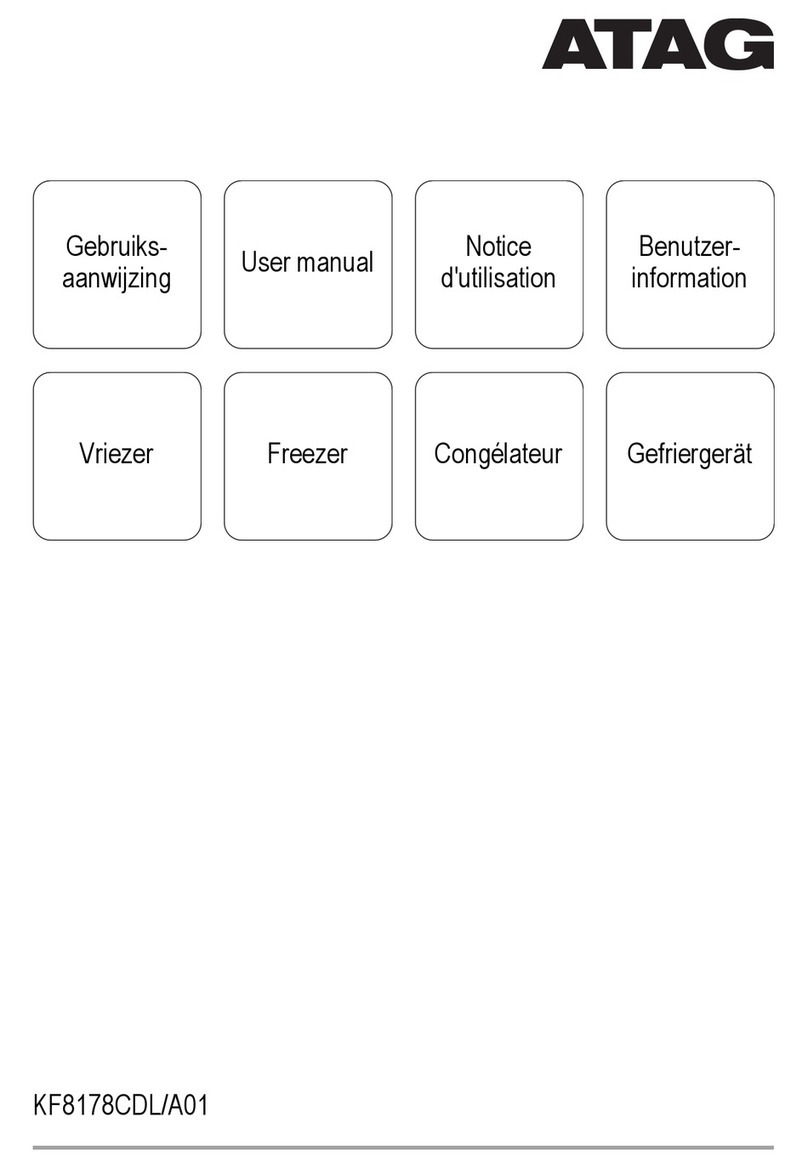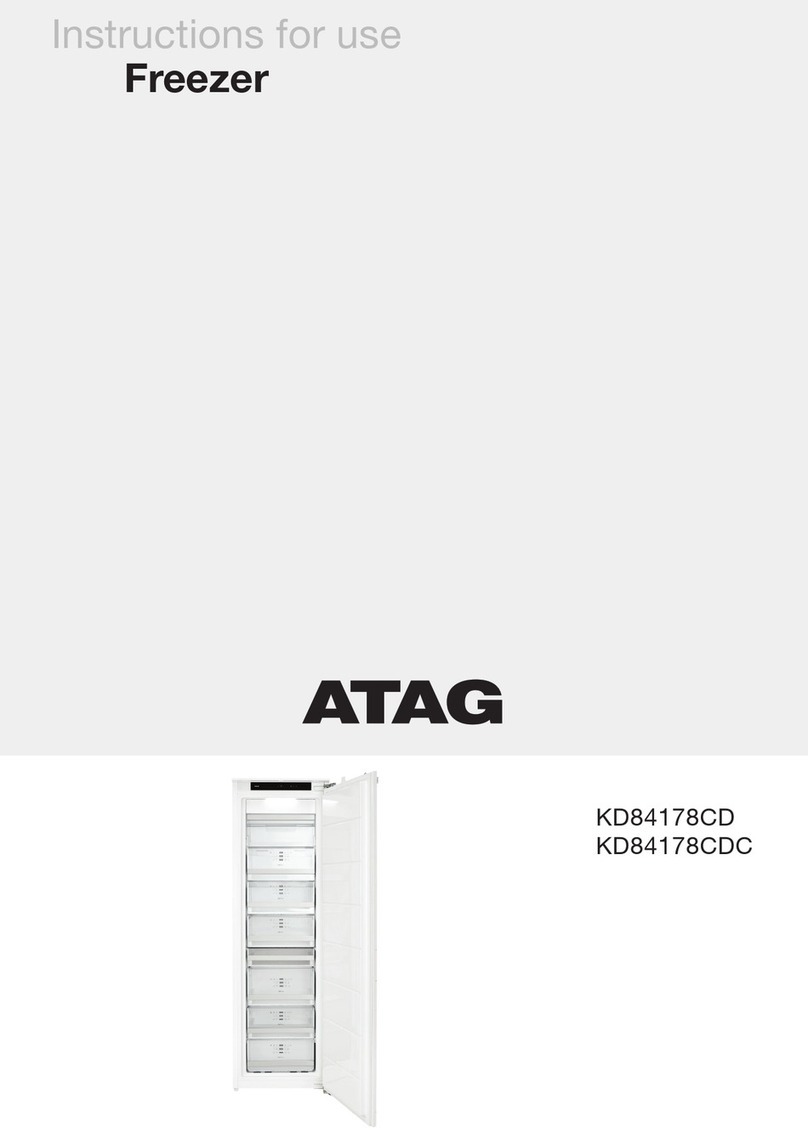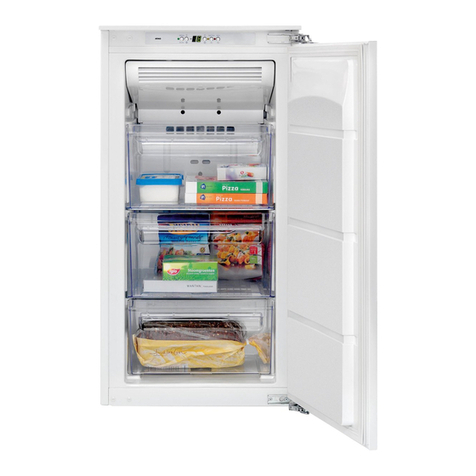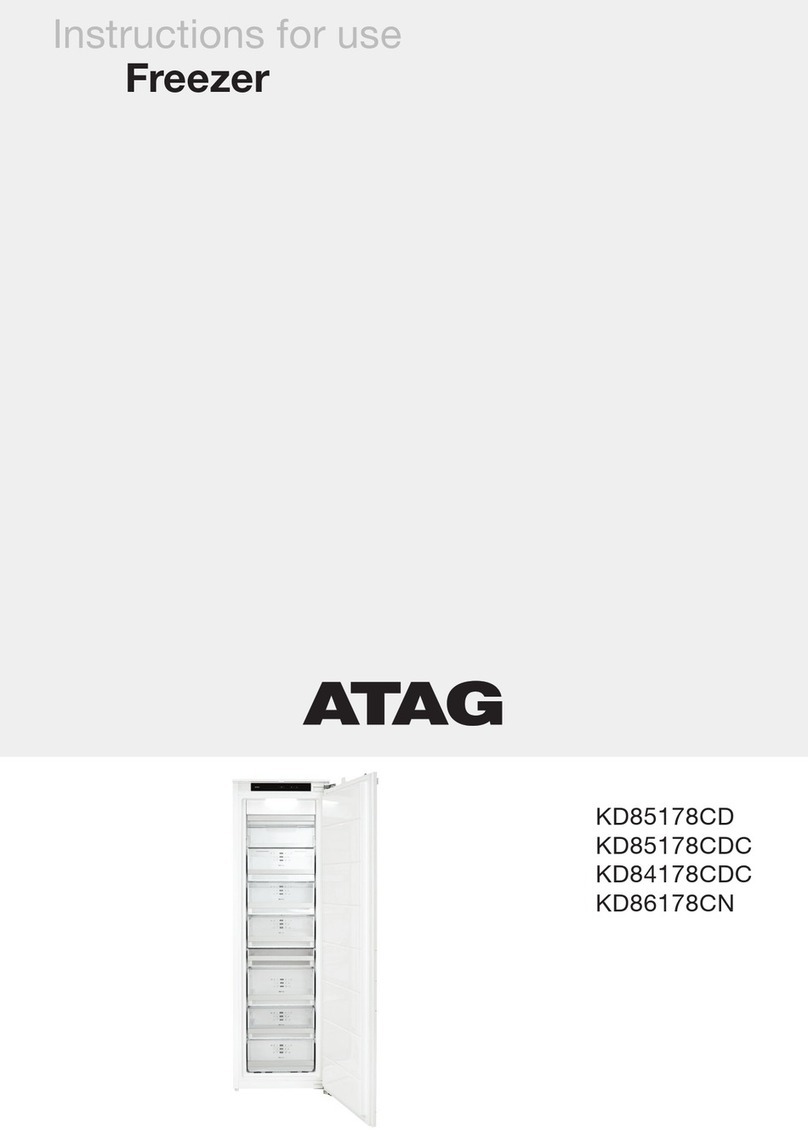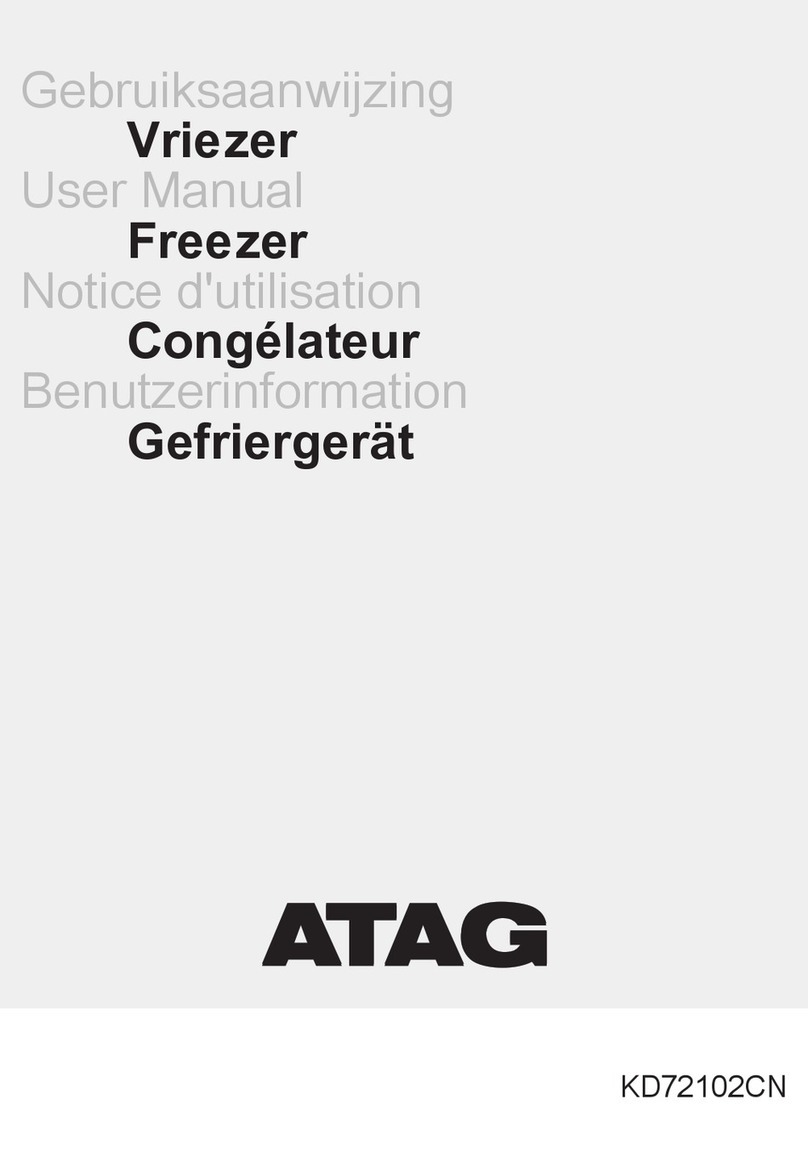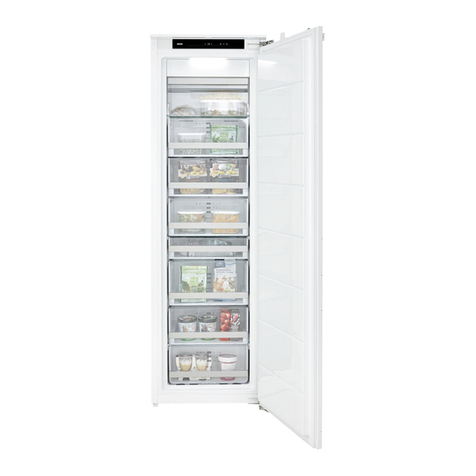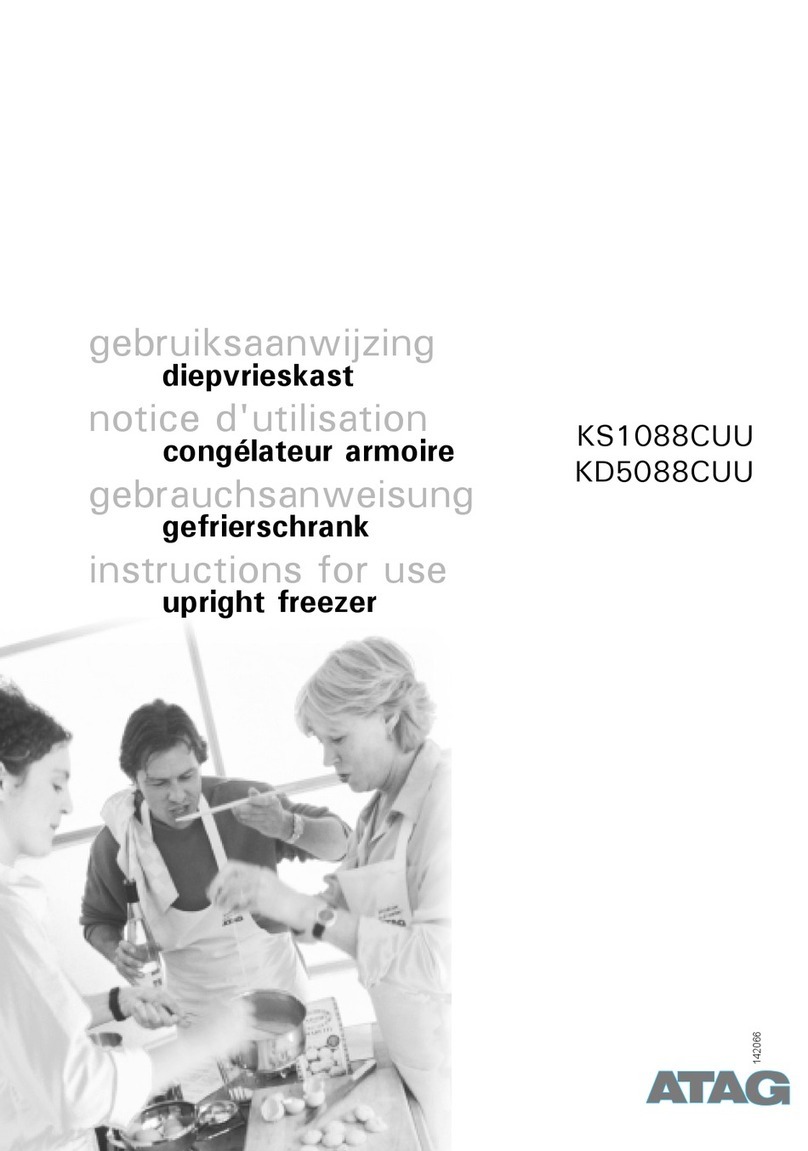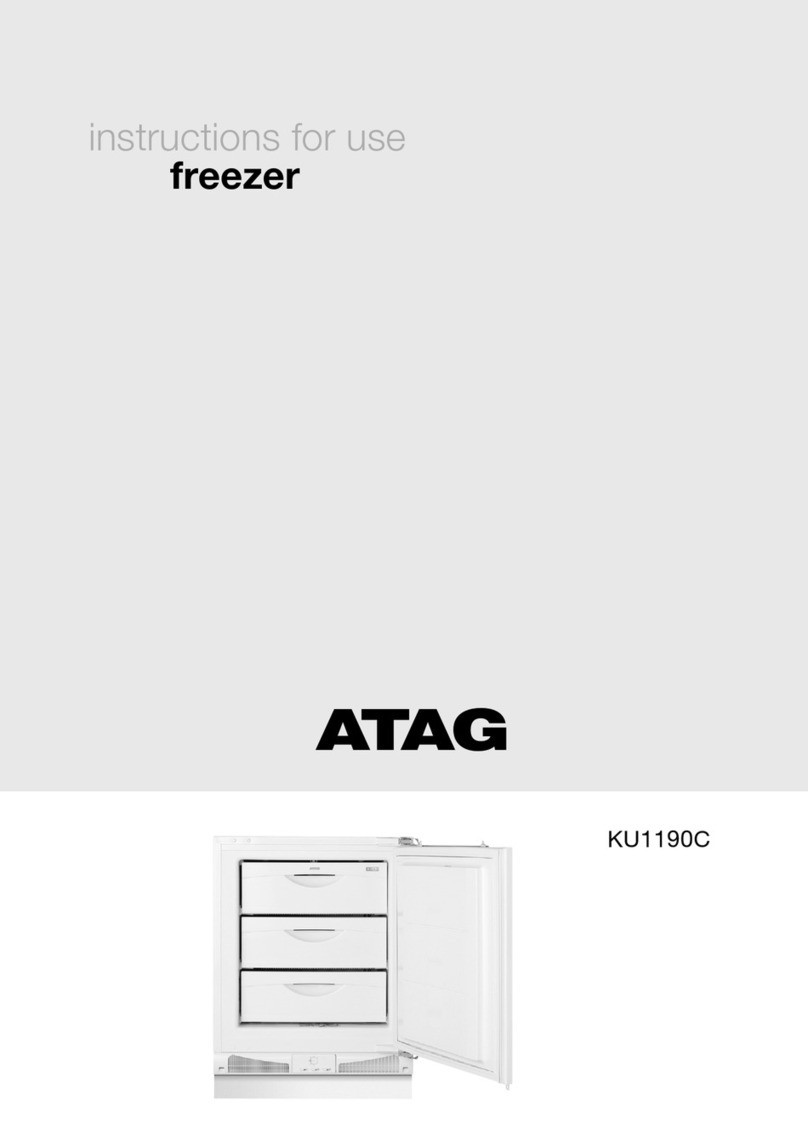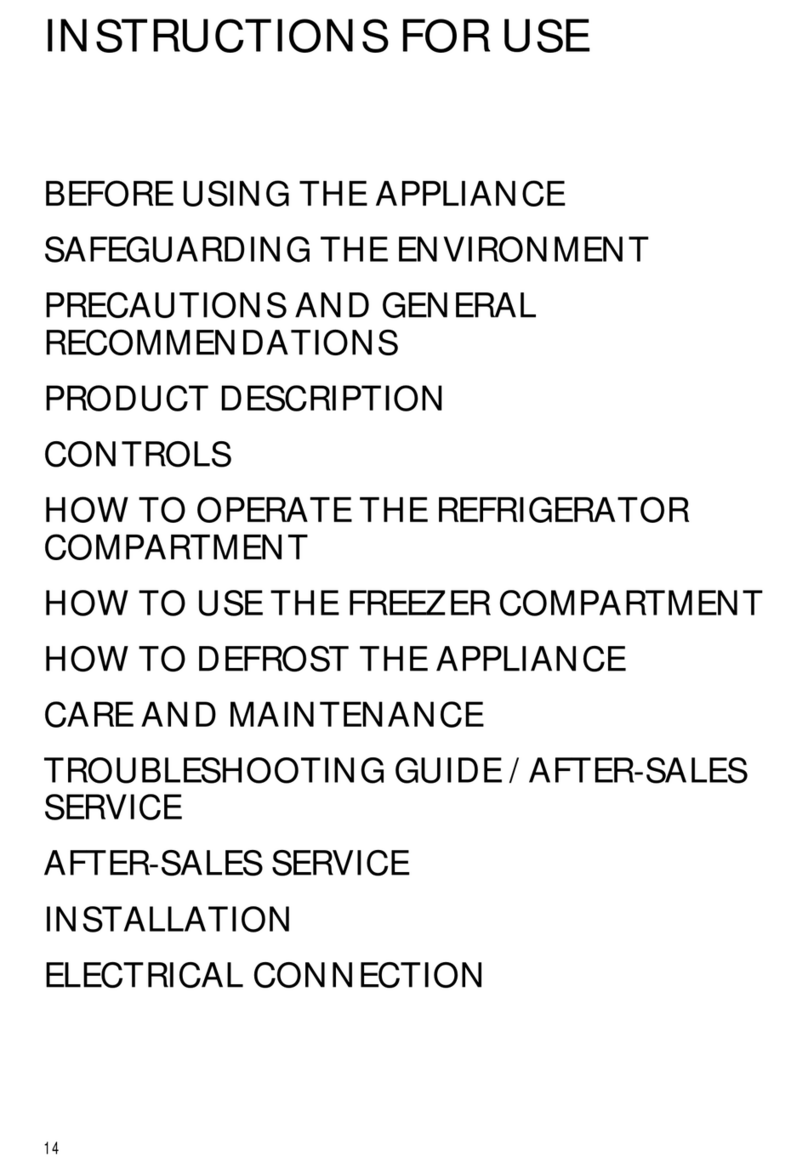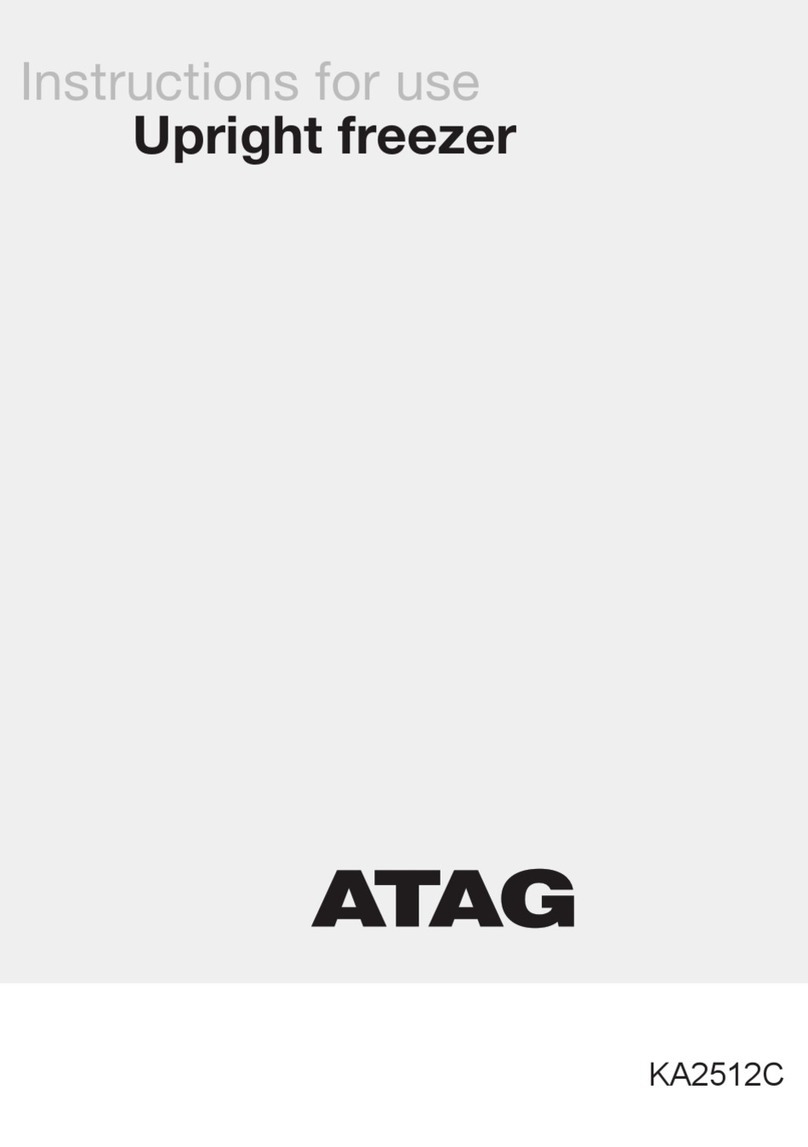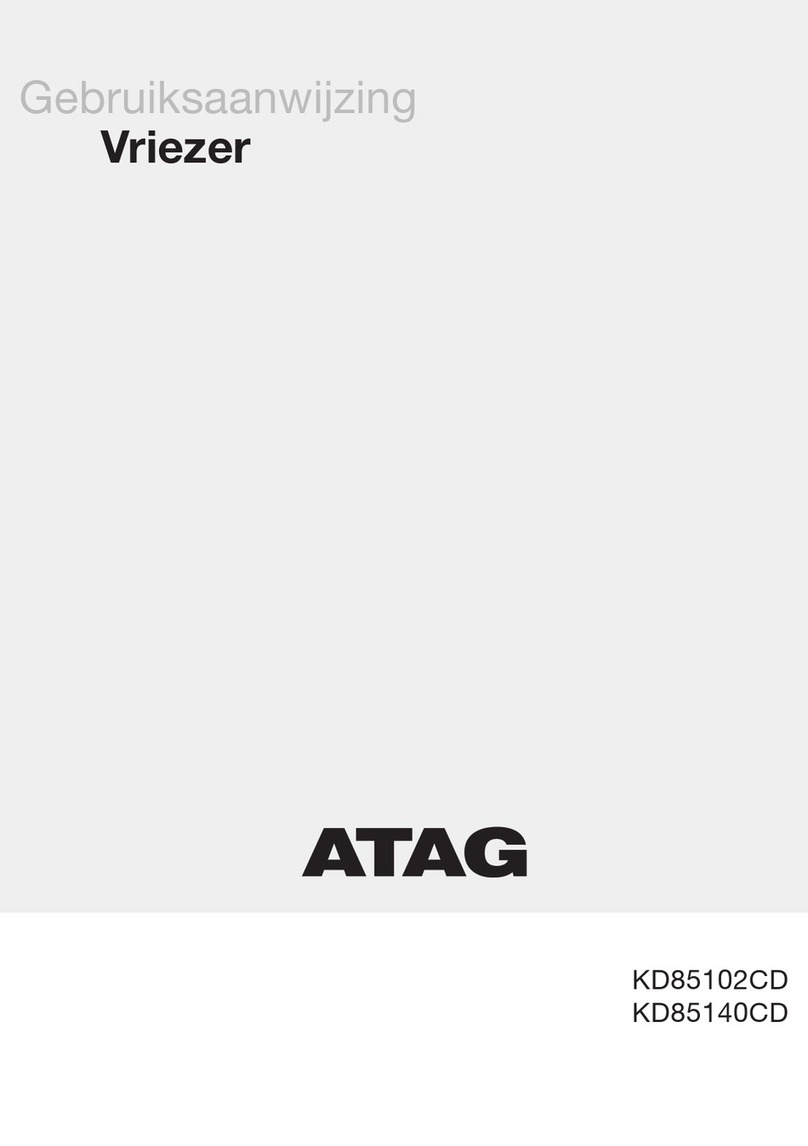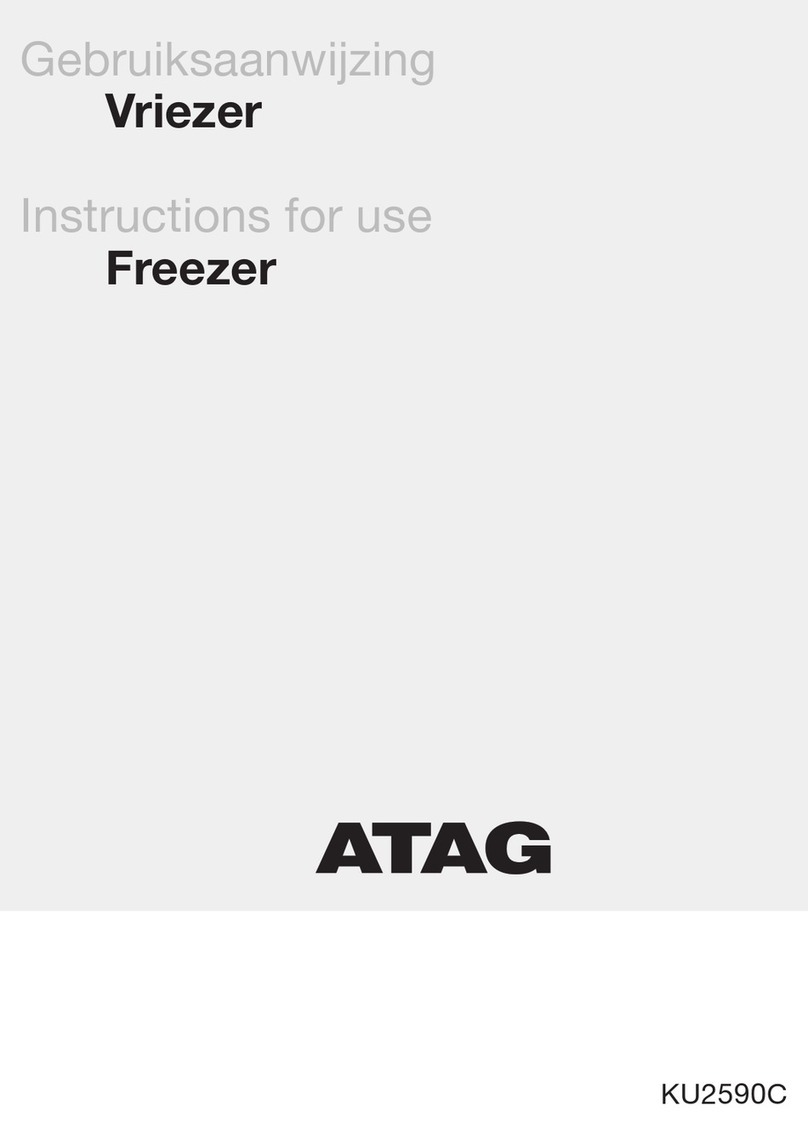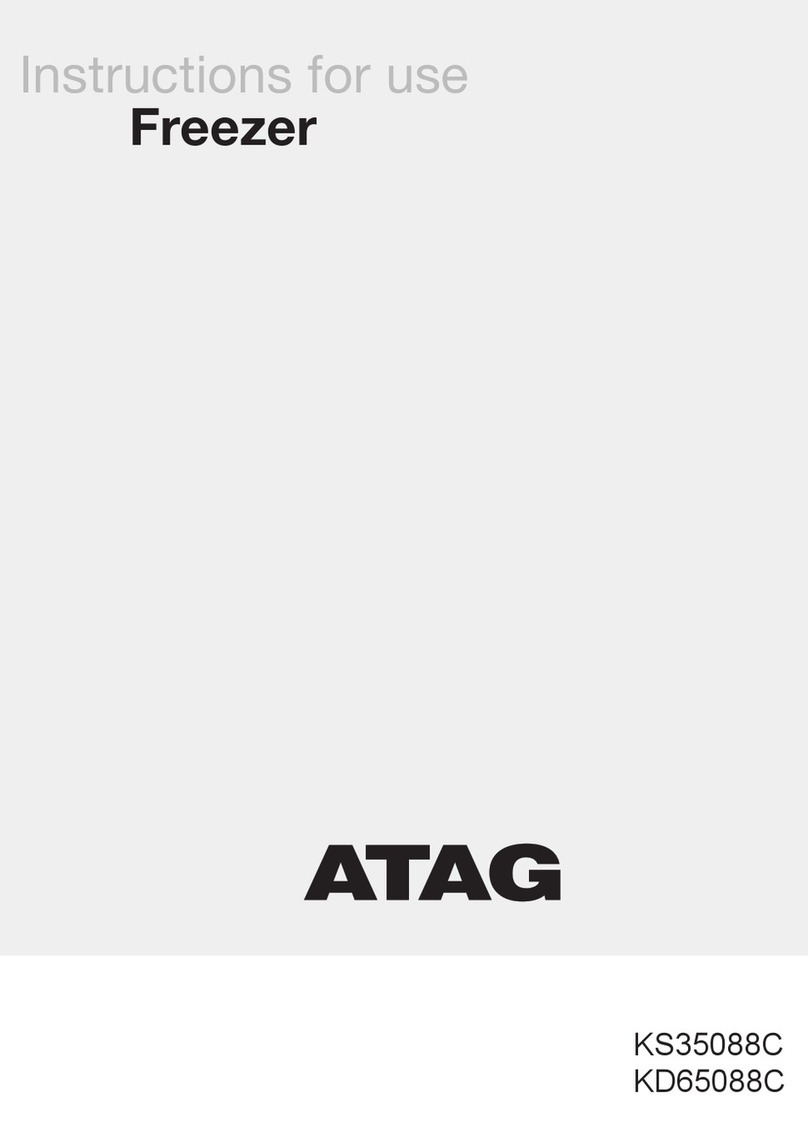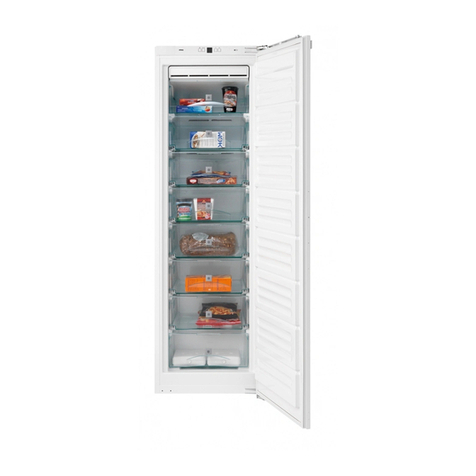60
· Do not freeze bottled drinks, especially not fizzy
ones such as mineral water, sparkling wine, beer,
cola etc., because liquid expands during freezing and
the glass bottle is very likely to blow up.
· Never try to eat frozen food (bread, fruit,
vegetables), because you may get frostbites.
· Carefully check the foods for color and smell and if
you are in doubt about their quality, throw them
away because they may be spoiled and therefore
dangerous to eat.
· Disconnect the appliance from the mains before
repairing (only a qualified technician should repair it)
and before cleaning.
· Use only enclosed tools or tools recommended by
the manufacturer.
· For the sake of environment protection - be careful
not to damage the rear wall of the appliance (the
condenser unit or the tubes - for example when
moving the appliance) or any part of the refrigerating
system inside the appliance. Do not use sharp object
for defrosting the appliance. Use only enclosed tools
or tools recommended by the manufacturer.
· The refrigerating system of the appliance is filled
with refrigerant and oil, so when the appliance is
damaged, handle it with care and dispose it of in
compliance with environmental protecting
precautions. (See We Care for the Environment).
· Heating element incorporated in the appliance, all
around the rim, is controlled by the operation of the
compressor and it prevents the door gasket to freeze
on to the freezer housing.
· In the supply cord is damaged, it must be replaced
by the manufacturer or his service agent or a
qualified person in order to avoid hazard.
· The rating plate is in the interior or on the rear wall
of the appliance.
The symbol on the product or on its packaging
indicates that this product may not be treated
as household waste. Instead it shall be handed
over to the applicable collection point for the
recycling of electrical and electronic equip-
ment. By ensuring this product is disposed of correct-
instructions for use
before putting into use
